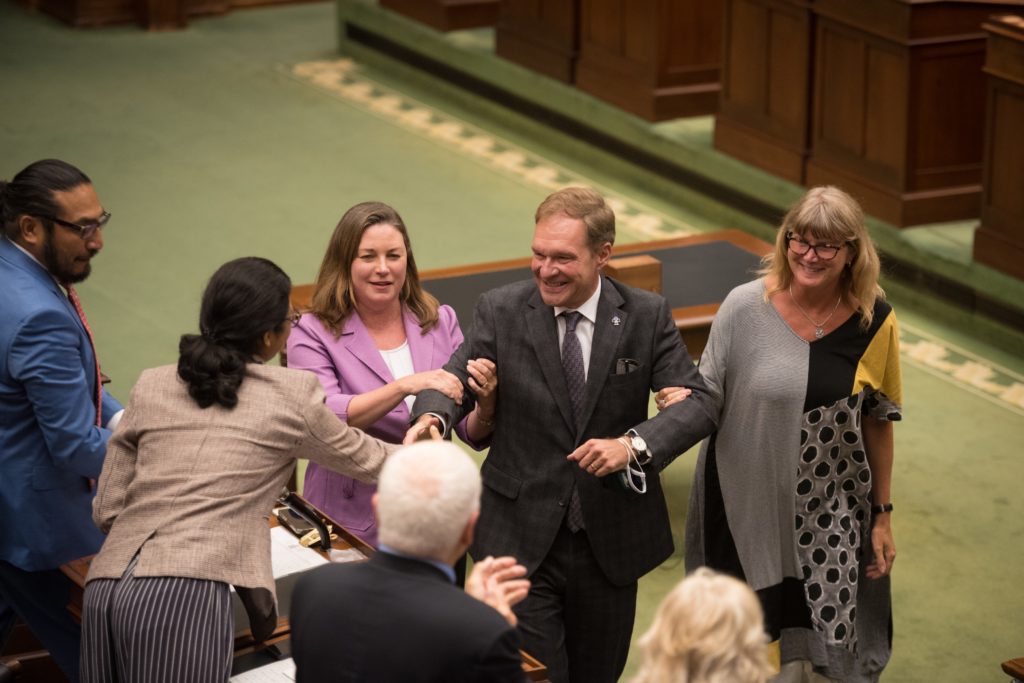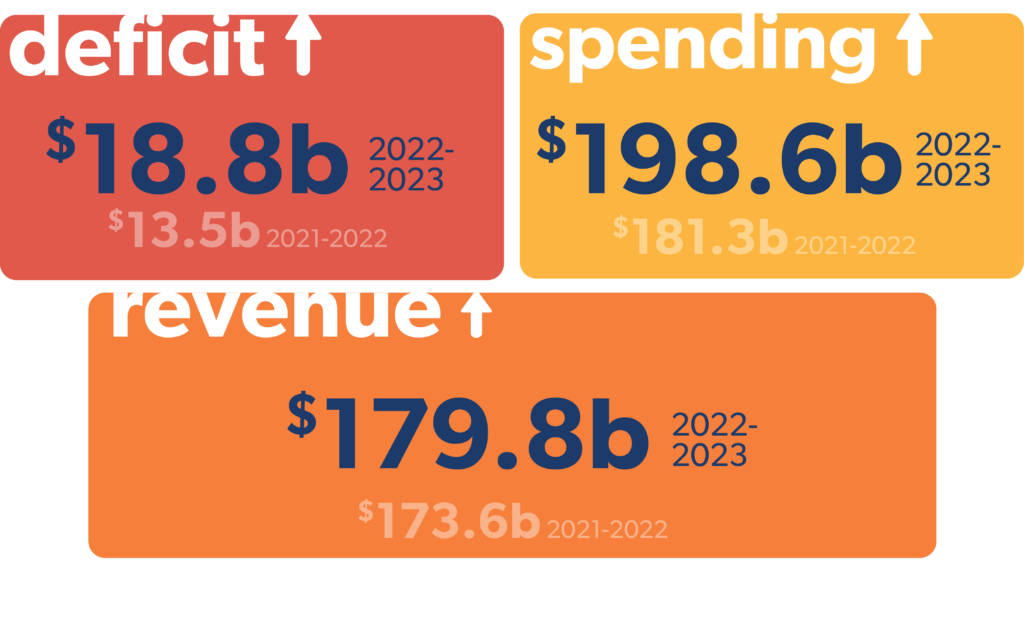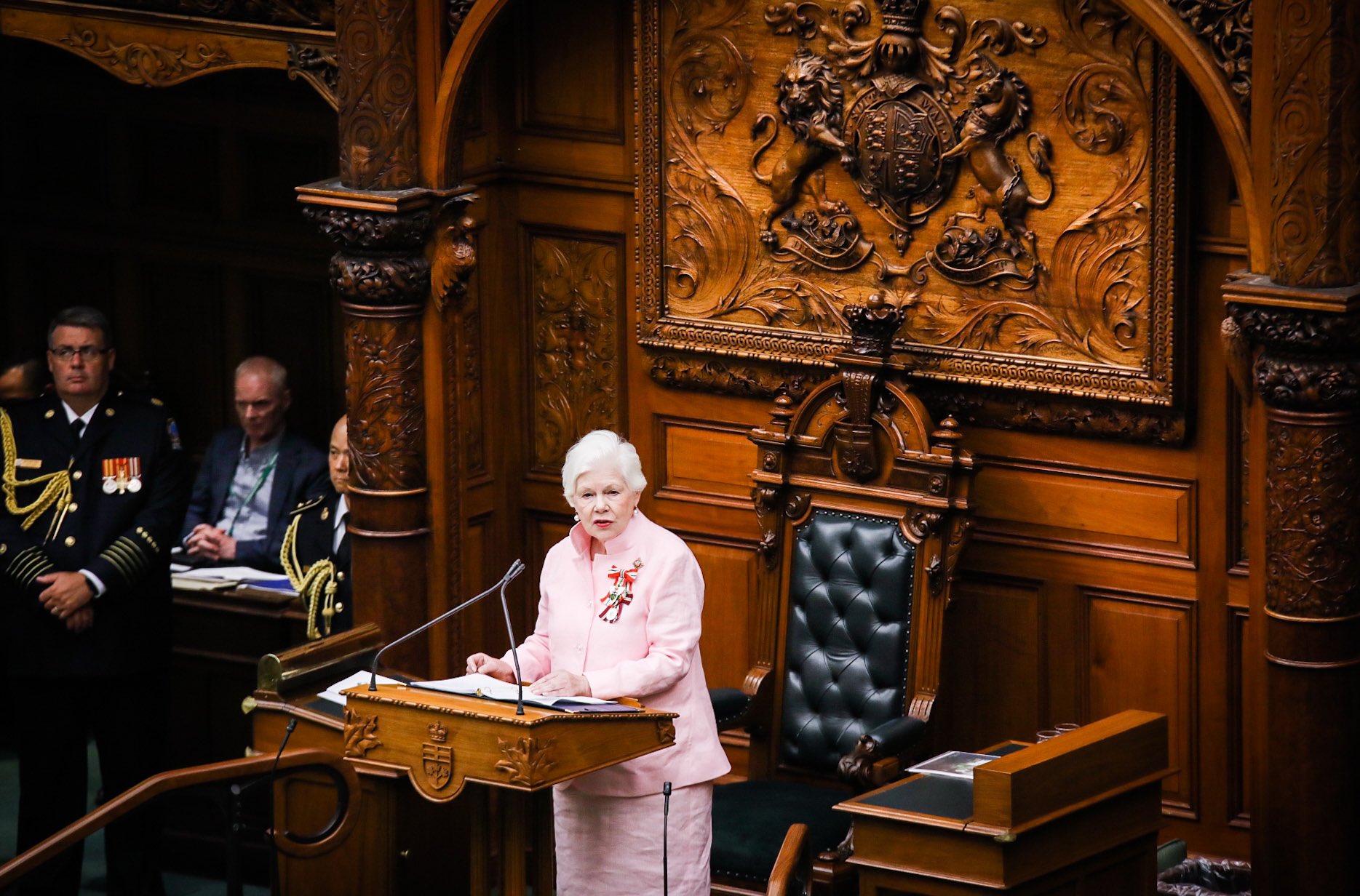TWITTER/Elizabeth Dowdeswell
On Tuesday afternoon, Ontario’s Lieutenant Governor Elizabeth Dowdeswell opened the 43rd Parliament of Ontario at Queen’s Park with a Speech from the Throne, “Lets build Ontario Together.” Touching on the theme of “unity,” the speech identified the key priorities of Premier Doug Ford and the Ontario government for the new session and reflected on the accomplishments of the past four years.
Priorities for the upcoming session
Health system and long-term care
Top of mind for many in Ontario is the strength and resilience of the province’s healthcare system. The speech identified investments of $1 billion to expand home and community care across the province, as well as the expansion of medical school enrollment. According to the throne speech, Ontario is on track to build 30,000 new long-term care beds by 2028 and to hire 27,000 new staff to provide four hours of direct care per day by 2025 with an investment of $5 billion over four years.
The speech identifies a number of metrics the government is using to track the performance of the healthcare system in Ontario, including surgeries happening at 90 per cent of pre-pandemic levels, but does not address the ongoing closures of emergency rooms and staff shortages across the province. As the session of the legislature gets underway, expect the opposition parties and media to continue to call for answers from the premier and from Minister of Health Sylvia Jones.
Better jobs and bigger paycheques
The Ontario PC Party and Premier Ford campaigned on the strength of Ontario’s economy and the record of the government to secure well paying jobs for Ontarians. The throne speech advances the narrative of economic strength, identifying a reduction in the cost of doing business in the province by $7 billion per year, while keeping taxes on individuals and businesses low and making strategic investments to improve the economy. Among the accomplishments cited by the government is $5 billion to build Canada’s first large-scale electric vehicle battery plant.
The speech also identifies the cooperation of the provincial and federal governments to invest in the transition to electric-arc furnaces at Algoma Steel in Sault Ste. Marie and ArcelorMittal Defasco in Hamilton, critical in the production of “clean steel,” and equivalent to removing nearly two million cars off the road.
Ontario’s labour shortage was also addressed, with the announcement of a $1 billion skilled trades strategy to expand training opportunities and break down barriers for out-of-province workers.
Stronger municipalities
Another priority area outlined by the throne speech is the government’s plans to address the housing crisis and build more homes in Ontario. The speech highlights the government’s goal of building 1.5 million homes over the next 10 years and touts a record number of housing starts in 2021 and commitment to increasing the speed of housing construction in the province. One way of doing this will be through enhanced authorities for the mayors of Toronto and Ottawa. The implementation of a “strong-mayor” system will intend to empower municipal leaders in two of Ontario’s largest cities to work more effectively and reduce timelines for development. This plan has already faced criticism from municipal leaders in both cities, while others left out of the plan have called on the province to include them. While the exact details of the plan have yet to be outlined, mayors in Toronto and Ottawa currently represent one vote on council, but have power to set agendas. A “strong-mayor” system, in place in some American cities like Chicago, could give mayors greater voting power on council, but not an automatic veto.
First orders of business

On Monday, the first order of business for the newly opened 43rd Parliament of Ontario was the election of the speaker. In a secret ballot, Wellington—Halton Hills MPP Ted Arnott once again secured the job he has held since 2018. It had been reported that Premier Doug Ford had lobbied his caucus to support Mississauga—Streetsville MPP Nina Tangri for the job. If successful, she would have been the first woman elected speaker of the Ontario legislature.
The second item for the government in the new legislative session is to re-table the 2022 provincial budget, originally released in the spring, before the election in June. The highlight of Budget 2022 was an investment of $86.6 billion to build and expand roads, highways and transit infrastructure over the next 10 years, including the new Highway 413 in Halton, Peel and York regions and the Bradford Bypass in Simcoe County and York Region.
The 2022 Budget tabled on Tuesday includes one key change from the original document released in the spring. The budget now includes an annual five per cent hike to Ontario Disability Support Program (ODSP) payments, bringing the total to $1,200 per recipient. All told, this will be a $425 million increase to the budget.
It also included a slightly reduced deficit for 2022-23 from the original version released in April, after a greater than expected rise in revenues, the new deficit for 2022-23 is $18.8 billion, down from the estimate of $19.9 billion in April.

